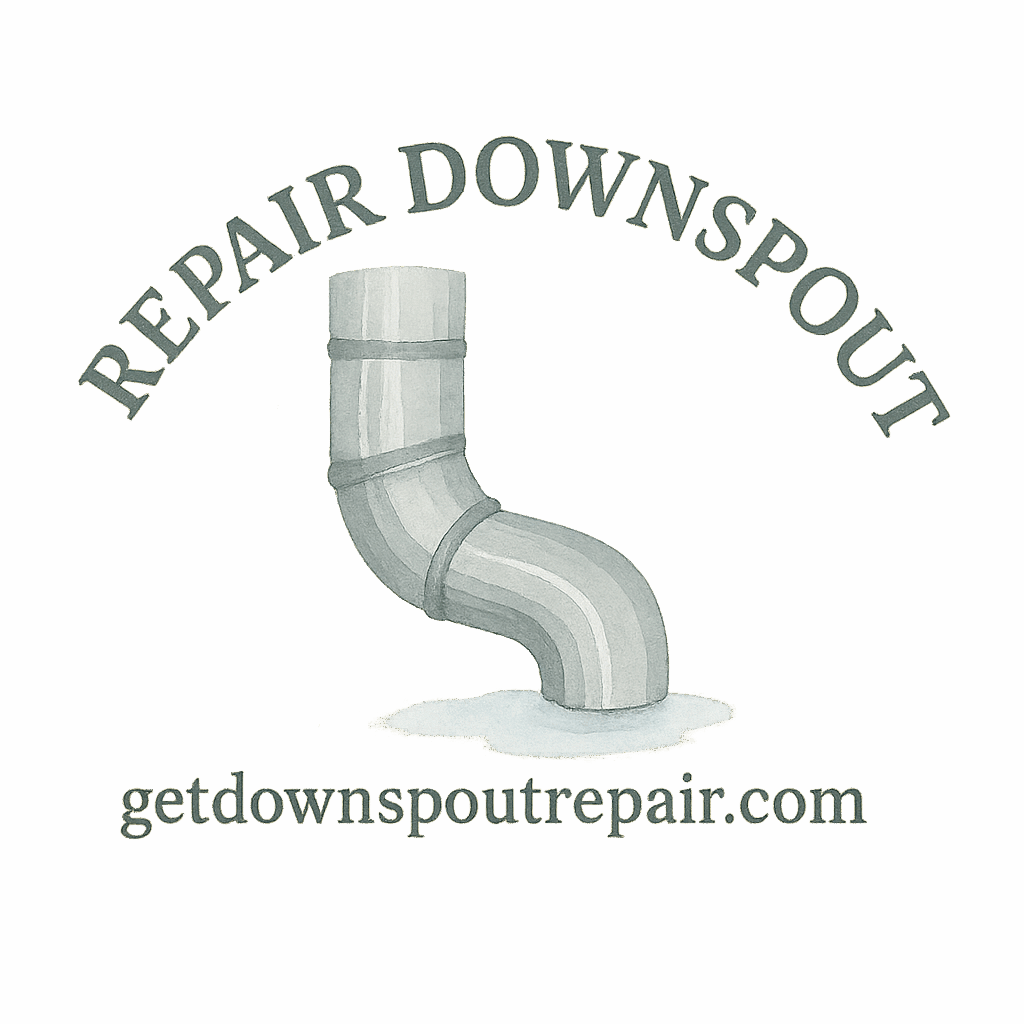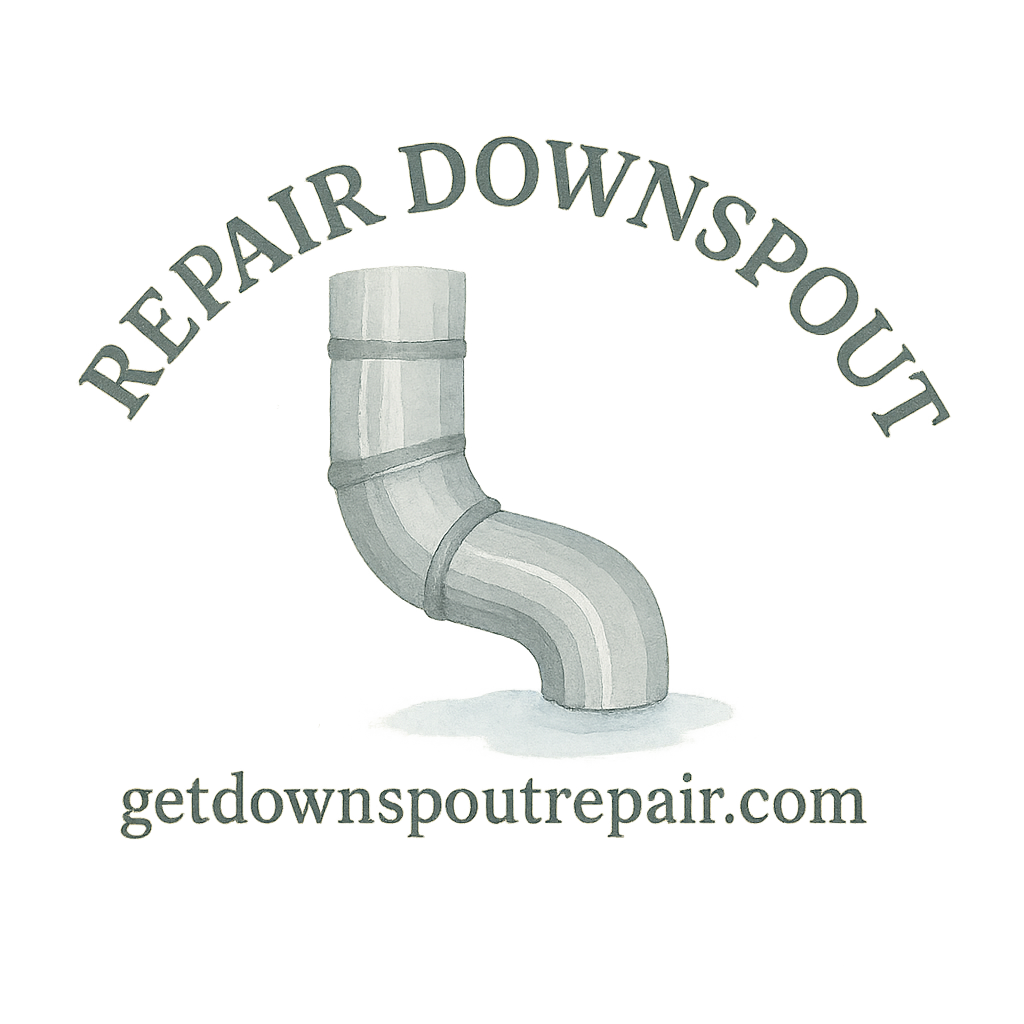Why Downspout Repair Matters Before Storm Season
When storm season rolls in, your gutters and downspouts take the biggest hit. Heavy rainfall, flying debris, and strong winds can wreak havoc if your drainage system isn’t ready. A neglected downspout isn’t just a minor inconvenience—it can lead to serious water damage, foundation problems, and costly repairs down the line. Preparing your downspouts now ensures your home stays dry, safe, and storm-ready.
For detailed repair guidance, check out the downspout repair basics resource that covers everything from small DIY fixes to larger-scale solutions.
Common Downspout Problems Homeowners Face
Before diving into the repair routines, let’s quickly look at the usual suspects.
Clogs from Leaves and Debris
Storms bring leaves, dirt, and twigs that pile up in your gutters and downspouts. Left unchecked, these clogs block water flow and cause backups. If you’ve ever seen water spilling over your gutters like a mini waterfall, this is probably the cause.
Learn more about preventing blockages in this guide on downspout clogs.
Rust, Cracks, and Holes
Metal downspouts rust over time, and even vinyl ones can crack or develop holes. These weak points leak water exactly where you don’t want it—near your siding, windows, or foundation.
Loose or Disconnected Joints
Storm-force winds often loosen screws and brackets, leaving joints wobbly or fully disconnected. That not only messes with drainage but also risks pulling sections of the downspout away from your house.
Essential Tools and Materials for DIY Downspout Repair
Before you get your hands dirty, you’ll want the right gear.
Budget-Friendly vs. Premium Tools
Some homeowners stick to budget-friendly tips like basic screwdrivers and duct tape. Others invest in premium tools like high-quality sealants, brackets, and long-lasting extension kits. Both work—it just depends on how long you want your repair to last.
Safety Gear Every Homeowner Needs
Don’t forget gloves, non-slip shoes, and safety goggles. Ladders are often the riskiest part of DIY work, so make sure yours is stable.
Routine 1: Inspecting Downspouts for Damage
This is the foundation of all repairs.
Identifying Early Warning Signs
Look for leaks, rust spots, peeling paint, sagging sections, or water pooling around your foundation. Early detection makes fixes quicker and cheaper.
Beginner-Friendly Repair Basics
If you’re new to this, check out the beginner repair guide. It’ll walk you through simple steps to get confident with minor fixes before moving on to bigger ones.
Routine 2: Cleaning and Unclogging Downspouts
The most common—and often overlooked—routine.
Preventing Clogs with Regular Maintenance
Clearing leaves and dirt every season saves you from major headaches later. Adding gutter guards can also help minimize buildup. For more insights, see prevent clogging.
DIY Tools That Make Cleaning Easier
From plumber’s snakes to garden hoses with high-pressure nozzles, there are many affordable DIY tools that get the job done without professional help.
Routine 3: Sealing Cracks and Holes
Using Quality Sealants and Patches
Waterproof sealant, aluminum patches, or even epoxy can fix small holes and cracks fast. These products are lifesavers during storm season when you need reliable protection.
When to Replace Instead of Repair
If holes are larger than a quarter or rust covers big sections, it’s time to replace instead of repair. Otherwise, you’re just putting a band-aid on a bigger problem.

Routine 4: Securing Loose Joints and Brackets
Step-by-Step Fastening Guide
Loose joints? Just grab screws, brackets, and a drill. Re-secure the sections so water flows smoothly. Always check the slope—water should direct away from your house.
The Role of Licensed Contractors for Major Fixes
Sometimes DIY won’t cut it, especially if your downspout sections are hanging off or you’re dealing with multi-story homes. That’s when hiring a licensed contractor is the smarter move.
Routine 5: Extending Downspouts for Better Drainage
Protecting Your Foundation from Water Damage
One of the easiest yet most effective routines is extending your downspouts. By guiding water at least 4–6 feet away from your house, you avoid erosion and water damage.
Cost-Effective Extension Options
Flexible extensions, splash blocks, or underground piping are budget-friendly ways to improve drainage. For more tips, see drainage protection.
Routine 6: Seasonal Preventive Maintenance
Gutter Cleaning and Water Flow Checks
Pair your downspout care with gutter cleaning. Pour water into the system to make sure it flows freely. If you spot leaks or slow drainage, fix them before storms hit.
Long-Term Benefits of Routine Care
Regular upkeep not only saves money but also extends your downspout’s lifespan. Think of it as an investment—you’re protecting your home and your wallet.
DIY vs. Professional Help: Which is Right for You?
When a Downspout Expert is Worth It
If your downspouts are heavily damaged, clogged underground, or beyond your repair skill, calling a downspout expert makes sense. They have quality products and the know-how to solve problems permanently.
Knowing Your Limits with Repairs
DIY is empowering, but safety and effectiveness matter most. If you’re unsure, you can always compare the cost of doing it yourself versus professional help.
Conclusion
Prepping your downspouts for storm season doesn’t have to be complicated. With these 6 DIY downspout repair routines, you can handle clogs, cracks, leaks, and drainage issues before they spiral into expensive damage. The key is consistency—don’t wait until a storm exposes the problem. Get ahead of it, and your home will stay safe, dry, and damage-free.
If you’re ready to dive deeper, explore more guides like DIY fixes, repair tools, and repair now tips.
FAQs
1. How often should I inspect my downspouts before storm season?
At least twice a year—once in spring and once in fall.
2. What’s the fastest way to unclog a downspout?
A high-pressure garden hose or a plumber’s snake works wonders.
3. Can I seal large cracks myself?
Small ones, yes. But large cracks or rust patches usually require full replacement.
4. How far should my downspout extension reach?
Ideally, 4–6 feet from your foundation for maximum protection.
5. Are gutter guards worth the investment?
Yes! They cut down on clogs and reduce your cleaning workload.
6. Should I attempt repairs on a second-story downspout?
Not recommended unless you have proper safety equipment—better call a pro.
7. What’s the biggest risk of ignoring downspout maintenance?
Water pooling near your home, leading to foundation cracks and basement flooding.


